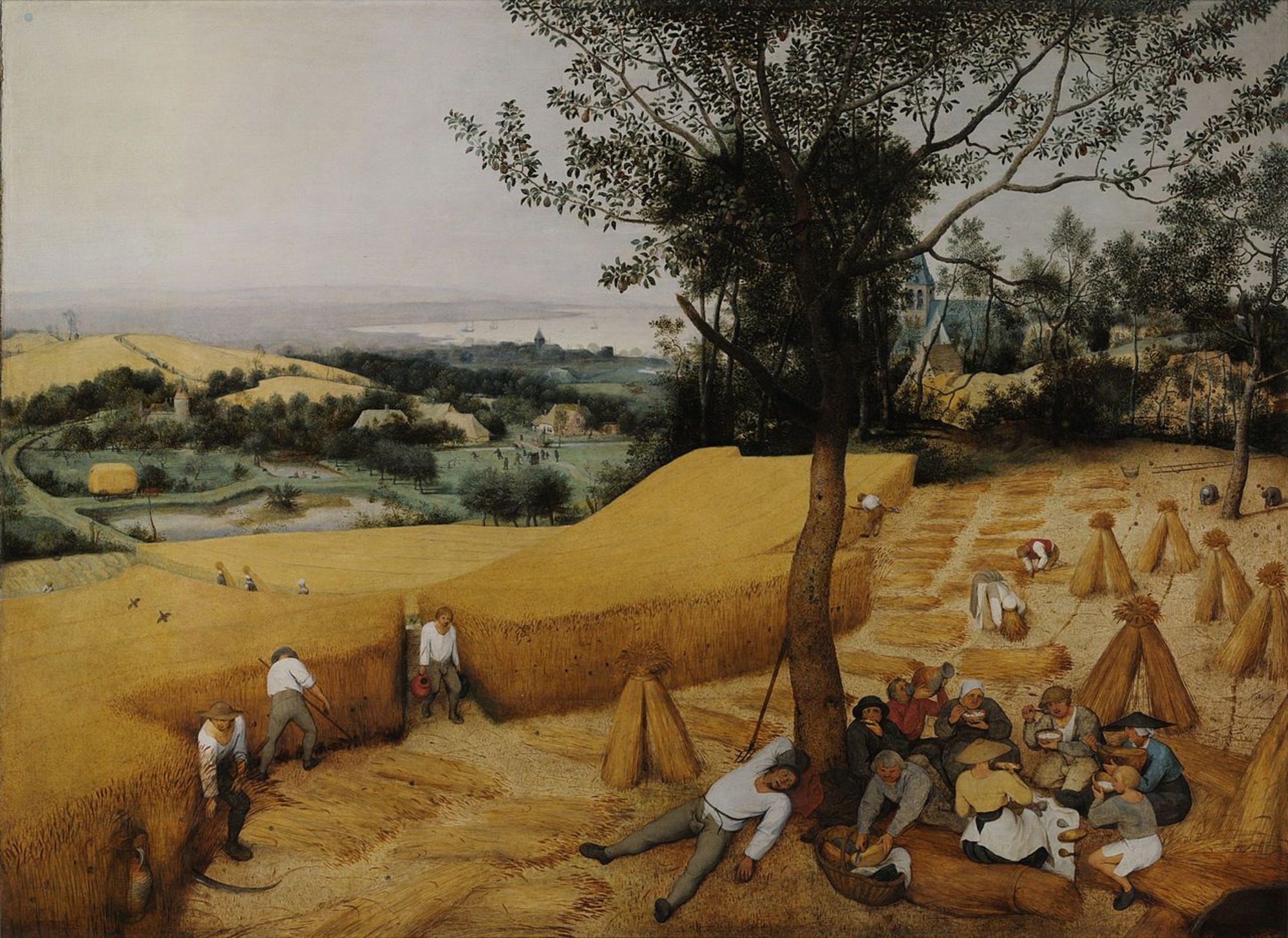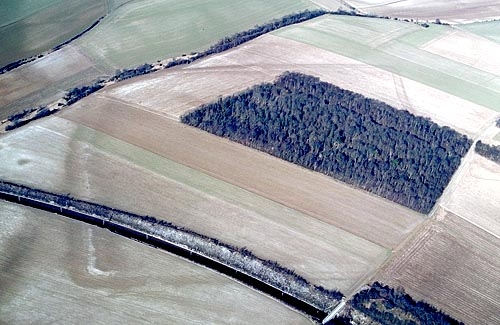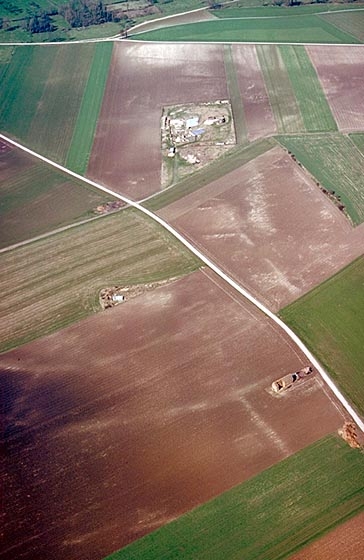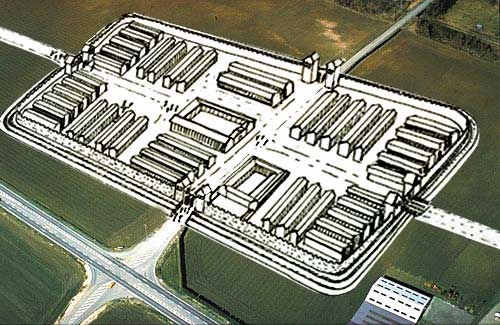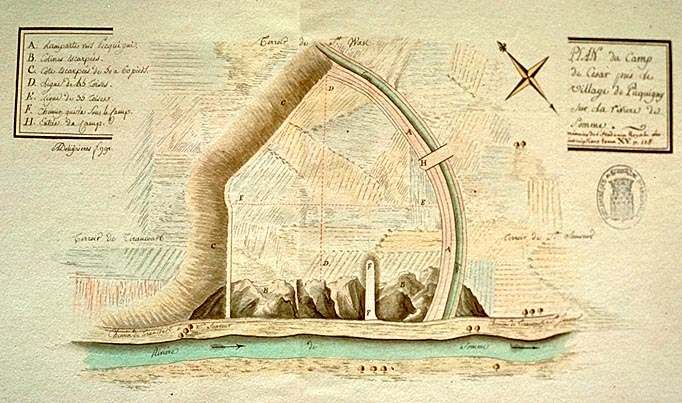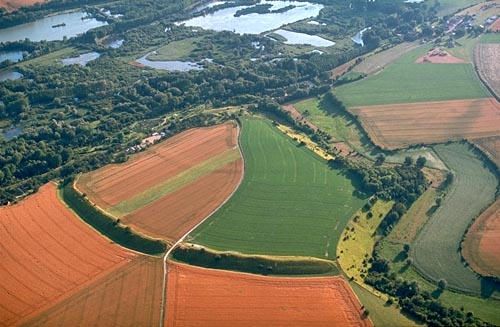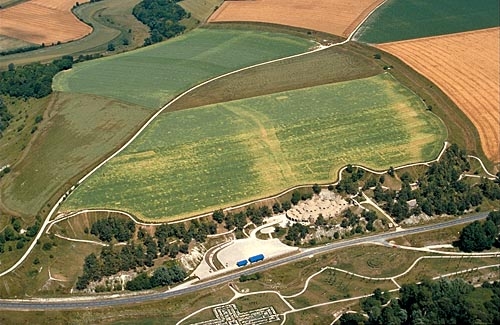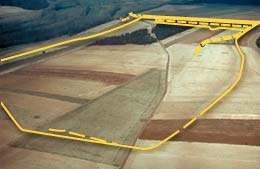- Home
- Discoveries
- Gallo-Roman settlements
- Fortified hills
Aerial photography has led to the discovery of several temporary military camps, surrounded by ditches and palisades, which date from the troubled periods between 57 BCE and 21 CE. It is possible that the Roman military camp at Folleville (Somme) is the origin of the vicus and of the sanctuary at Rouvroy-lès-Merles (Oise), located nearby.
Seven kilometers to the south, another Roman camp was discovered atop Mont Câtelet at Vendeuil-Caply (Oise). It was adapted to the field, taking the shape of a semi-circle. It is a very typical camp, with its double ditches, rounded angles, and a remarkably neat titulus It is possible that this camp played a role in the formation of the ancient village that it overlooks, and whose foundations appear from time to time.
Somewhat more odd is the camp of Arlaines at Ressons-le-Long (Aisne), in which a primitive earth and wood military structure followed a rectangular stone fortress from the late first century. Here again, the camp gave rise to several exterior constructions (baths, temples, and small civil agglomerations).
Aerial photograph of the Roman camp.
In the Saint-Denis valley at the foot of the Roman camp on Mont Câtelet, we can see a Gallo-Roman village.
The "Arlaines" camp at Ressons-le-Long (Aisne) was excavated in the nineteenth century and in 1976 by M. Reddé. Only the stone foundations of the camp stand out in this photograph.
Oppida
It is clear that Roman troops occupied and reinforced the oppidum at Chaussée-Tirancourt (Somme), even if the moated, exterior enclosures do not have the characteristics of Roman entrenchments. On the other hand, at Liercourt-Erondelle (Somme), the Romans considerably reinforced the oppidum's large levee of earth, and built a camp outside it. They probably established a presence on the hills of Liercourt and La Chaussée (Somme) after the Gallic Wars in order to be able to deal with uprisings. Peace did not come easily!
Antique watercolor of the "Camp of Caesar", whose sizeable fortifications have been the object of wonder for centuries. La Chaussée-Tirancourt (Somme). Abbeville Library.
The "camp of Caesar" was thought to be the perfect model of a "Belgian" oppidum, with its earth levee and ditch blocking the plateau. However, recent excavations have given rise the thought that it was built after the Conquest. La Chaussée-Tirancourt (Somme).
Same site. Large ditch and earth levee, which was raised up from the inside. The dark areas correspond to chalk extraction zones. The chalk appears in white where the wall was built up.
A second line of defense, completely leveled off and parallel to the first, dates from the same period. It was excavated by B. Bréart. In the foreground, we can make out the archaeological reconstructions of the site of Samara, at La Chaussée-Tirancourt (Somme).
The leveled Roman camp abuts the Gallic oppidum, where the earth levee is the highest. Liercourt-Erondelle (Somme).
